- Home
- Ian Buruma
Inventing Japan: 1853-1964 (Modern Library Chronicles) Page 7
Inventing Japan: 1853-1964 (Modern Library Chronicles) Read online
Page 7
One of the worst instances of Japanese brutality toward Koreans came in the aftermath of the earthquake that devastated Tokyo and Yokohama in 1923. The whole city began to lurch violently around lunchtime. Within hours, much of Tokyo was burning. Wild rumors spread as swiftly as the fires: Foreigners had attacked Japan with an earthquake machine; Koreans had gone around poisoning the wells. There was nothing much people could do against “foreigners,” since there were comparatively few, but mobs did go around killing Koreans, drowning them in the Sumida River or beating and trampling them to death amid the smoldering ruins. One person who tried to protect them was Yoshino Sakuzo. He also did his best to revise the low official estimates of the Korean death toll and arrived at a figure near two thousand.
In 1923 there was still hope for those who promoted freedom. Two years later, the government led by Kato Takaaki, a wealthy Anglophile who emulated the upper-class British manner, managed at last to pass a law giving the vote to all men over twenty-five with a steady income. Considering where Japan was a mere century before, and where the rest of Asia still was at that time, this was a stupendous achievement. But it was also as if a step forward had to be immediately countered by a reverse. A week later, the Peace Preservation Law made it illegal to participate in any organized opposition to the kokutai, or national polity. This meant that communists or radical socialists could face up to ten years in jail.
Kato died a year later, remarkably, of natural causes. Following a brief interlude under the stewardship of a general, the government fell to an even more interesting politician, Hamaguchi Osachi, leader of the Progressive Party, or Minseito. He had great plans to give women the vote in local elections, reform labor-management relations, and improve relations with China. In London in 1930, he agreed to sign a naval treaty that put further limits on a Japanese naval buildup. And then things went badly wrong. The navy chief of staff was enraged by what he saw as a politician encroaching on his turf, since this was a naval affair and thus, in his view, outside civilian control. Hamaguchi was shot by a right-wing fanatic at the Tokyo railway station and died a few weeks later. Litle more than a year after that, Prime Minister Inukai Tsuyoshi, who was trying desperately to keep radical army and navy factions from going to war with China, was murdered by a group of naval officers, called the Blood Pledge Society, in an attempted coup d’état. Two business leaders were killed as well, while other fanatics were bombing such symbols of right-wing hate as Inukai’s party offices and the Bank of Japan. By then, the experiment with party government was over. Manchuria had been turned into a puppet state. And the war in China was only just beginning.
—
The Weimar Republic was destroyed by Hitler not only through the brutality of his storm troopers, but also because too few people were prepared to defend its fragile institutions. Communists and social democrats were too busy fighting each other to fully appreciate the seriousness of the Nazi threat. Taisho democracy, too, never had enough defenders. Already in 1916, Yoshino Sakuzo, the liberal thinker, wrote that many Japanese intellectuals failed to see the point of universal suffrage. Indeed, many loathed it. Like so many disillusioned German intellectuals, they saw democratic politics as vulgar, debased, selfish, and corrupt. This led to radical antiliberalism on the one hand and morbid introspection on the other. One was sometimes the result of the other.
The most influential Japanese philosopher of the early twentieth century was Nishida Kitaro. Deeply immersed in German idealism as well as Buddhist thought, Nishida tried to articulate a new, uniquely Japanese way of thinking. Seeking the essence of Japaneseness was the Japanese version of German idealism. It emerged, like so many products of early modern Japan, as a hybrid in which Zen got mixed up with Hegel, Nietzsche, and, especially in the hands of Nishida’s acolytes, Heidegger. The basis of Nishida’s thought was the fusion of subject and object. What was needed was direct experience, unhampered by reason, a kind of melding of Buddhist satori, or instinctive enlightenment, and Hegel’s “absolute Spirit,” where the individual is dissolved in the collective. This kind of thing would have been harmless had it been confined to the halls of Kyoto Imperial University. But it was not. A notorious tract published in 1937 by the Ministry of Education, entitled Kokutai no Hongi (Fundamentals of the National Polity), told Japanese to “abandon” their “small egos” and “seek in the emperor” the source of their existence. The Japanese, in the purity of their spirit, were superior to all other nations and “completely different in [their] nature from the so-called citizens of Western nations.” This politically toxic document was a vulgarized version of Nishida’s view of the Japanese subject dissolved in the imperial object.
The careers of two men, both born in 1883, show how such devotion could come as a welcome relief to Taisho-period figures who had tried hard to be individualists. The first was Kita Ikki. He began his intellectual journey as a romantic devotee of Nietzsche and Nichiren Buddhism. In the overheated atmosphere of 1920s Japan, Nichiren spawned a school of belief that held that imperial Japan would one day be the center of a unified world, but only after Jews and democrats were defeated. There were obvious traces here of borrowed Russian propaganda; Jews were largely unheard of in Japan.
Kita’s family background was neither xenophobic nor particularly romantic. He was the son of a sake merchant on the remote island of Sado. His father was a firm supporter of the People’s Rights Movement. From an early age, Kita was seized by the ideal of absolute individual freedom. But the question of people’s rights was too tame for him. In fact, he wasn’t interested in peaceful politics at all. He was after absolutes and violent acts of will. As it did many Japanese idealists of his age, individualism confused him. Inspired by his beloved Nietzsche, he began searching for ways to overcome his sense of individual isolation by fusing the human and the divine. In 1911, he witnessed the revolution in China, which brought down the Qing dynasty, and was so excited that he adopted a Chinese name. His thoughts soon turned to a Japanese revolution.
Revolutionary violence, for Kita, was not so much political as religious, an act of personal, spiritual liberation. He made contacts with members of extreme right-wing groups and wrote political pamphlets that promoted a kind of national socialism with the emperor as the religious führer. The state, he argued, had been hijacked by corrupt oligarchs, bureaucrats, bankers, and industrialists. The oligarchs had tricked the Japanese people by limiting the emperor’s political power through the vaguely worded Meiji constitution. What was needed was a coup d’état that would give the “people’s emperor” absolute power. The in-vidual would be liberated by total identification with the emperor and the nation. The nation was an organism, a “large self,” as he put it, that would absorb the “small selves” of all individual subjects. And beyond the imperial nation lay nirvana, where the self would become God. Kita Ikki had come a long way from his father’s liberalism. But he had a sacred cause for which to live or, what is more important, to die.
Kita’s cause had a particular appeal to junior officers in the army, who were mostly from poor rural areas and, like Kita Ikki, blamed capitalist city slickers for the corruption and degradation of the nation. A number of these men, burning with violent idealism, staged a coup in February 1936, aiming to give absolute power to the emperor and purge the kokutai of traitors and corrupt officials. The coup was crushed, and Kita was arrested as the man behind the scenes. If the coup had succeeded, he would have been made minister without portfolio. He was executed together with sixteen others.
Kita Ikki’s story shows how combustible Japanese society had become in his lifetime. He was not just an oddball, operating in the rancid margins of right-wing extremism. From the early 1920s, he had regular meetings with Admiral Togo Heihachiro, hero of the Russo-Japanese War and still an influential player in navy politics. Kita’s brand of mystical chauvinism was both revolutionary and dangerously close to the ambitions of far more powerful enemies of democracy. Just two years after Kita’s execution, Araki Sadao, the ed
ucation minister, wrote that the Japanese empire, subject to divine will, “rests upon the foundation of blood relationship, which far transcends mere morality, and our Ruler is viewed in the light of a super-moral Being.…” Note the “mere” morality; it could have been written by Kita himself.
Takamura Kotaro’s career was not violent like Kita Ikki’s, nor did he have any significant political influence. He was a sculptor and a poet. But his life demonstrated, perhaps even more clearly than Kita’s, how difficult it was to be an individualist in early modern Japan. His attitudes to the West, and to his own country, were an extreme version of what many Japanese intellectuals went through at the time.
The son of a well-known sculptor, Takamura had a deep interest in European art. Rodin was a particular passion. After studying Western art in Tokyo, he went to New York in 1906 and began to write poetry, then moved to London, where he met the potter Bernard Leach, and finally, in 1908, traveled to Paris, the city of his beloved Rodin and Baudelaire. Back in Tokyo the following year, he lived the life of a Westernized bohemian, loathing the provincial stuffiness of Meiji Japan, always comparing it unfavorably to cosmopolitan Paris. In one poem, entitled “The Japanese,” he rehearsed everything he hated about his fellow countrymen, those “Monkey-like, foxlike, squirrellike, gudgeon-like, minnow-like, potsherd-like, gargoyle-faced Japanese!”
This was in 1911, when Takamura’s memories of his years in the West were still relatively happy. He said he had felt completely relaxed in Paris. He had even been able to forget his nationality there, which is something for a Japanese. Perhaps, however, he found it hard to live as a Parisian-style bohemian in Tokyo. He might have felt isolated in his own society. Whatever the reason, in the 1920s a different tone crept into Takamura’s poems, a peevish sense of alienation sometimes bordering on hysteria. His European years were now remembered as a time of loneliness and rejection. An episode with a Frenchwoman was recalled with bitterness. The morning after his erotic encounter, he saw himself in the mirror as a “Mongol,” as le Jaune, the yellow Jap. Self-hatred gradually curdled into xenophobia and racial chauvinism. In the 1930s, he wrote poems celebrating the glories of Japanese militarism. It was as if, with the onset of war, he could turn with relief to such phrases as “my country, Japan,” or “we Japanese.” In a poem addressed to Chiang Kai-shek, he wrote:
My country, Japan, is not destroying yours, sir;
We’re only destroying anti-Japanese thought.
He was released at last from the strain of being a Westernized individualist.
It was sentiments such as these, widely shared by Japanese intellectuals, that made it so hard to resist the propaganda of national unity and emperor worship. Communists and some radical socialists held out, and critical journalism continued to appear, despite the censors’ efforts, but as time went on, liberals were squeezed between the hard Left and the violent Right. And the mainstream political parties, such as Hara Kei’s Seiyukai or Hamaguchi’s Minseito, did nothing to help the liberals. In the late 1920s, the lower house voted for laws that suppressed political dissent, and the party politicians supported police crackdowns not only on the radical Left, but on many social democrats, too. Their ultimately futile attempt to protect the authority of the parliament led them to pander to the chauvinism of their enemies in the bureaucracy, the imperial court, and the armed forces. In the end, as always happens in such circumstances, they ended up being crushed themselves.
—
Even as Admiral Togo Heihachiro was taking a keen interest in Kita Ikki’s revolutionary theories, he was invested with the task of grooming the next emperor. Crown Prince Hirohito’s first and possibly most influential teacher had been General Nogi, the other hero of the Russo-Japanese War. After Nogi slit his stomach out of loyalty to the Meiji emperor, Hirohito’s grandfather, Admiral Togo took over the supervision of the young prince’s education. More or less totally cloistered from the outside world, Hirohito was drilled in such military pursuits as shooting, map reading, strategy, and horse riding. A small, sensitive, inarticulate boy, he was hardly a martial type by nature, but he did his best.
Hirohito’s young mind was also filled with all kinds of odd notions, which owed as much to the late-nineteenth-century nativism of the Mito School as to the latest Germanic race theories. He was taught the myths of Japanese racial purity and the divine provenance of his own bloodlines as though these were historical facts. Much was made of the Darwinian struggle of the Japanese race with the “Aryan” nations. Above all, he was continually warned against the “poison of European liberal thought.” His teachers were extremely worried that democratic ideas would undermine the awesome authority of the imperial institution, the preservation of which was the monarch’s highest duty. The fall of European monarchies in 1918 had come as a shock. Kaiser Wilhelm II’s defeat was held up as a cautionary tale. In effect, Hirohito’s education was a form of counterpropaganda against the struggling Taisho democracy.
This is not to say that he was told to be on the side of right-wing extremists. Order was the main thing, and national unity. But when Hirohito expressed his fear of “extremist thought,” which he did on various occasions, the type of thing he had in mind was not Kita Ikki or other right-wingers, but Marxism, social democracy, or even democracy tout court. Social harmony, and thus the preservation of order, had to be based on a shared consciousness of racial homogeneity, on military discipline and reverence for the emperor. Anything else was disruptive and divisive and would lead to selfishness and chaos.
Hirohito became regent in 1922, when his unfortunate father was removed from the scene. But just before that, Hirohito had his first and only taste of a kind of freedom. In 1921, it was deemed a necessary step in his education to send the crown prince on a trip to Europe. Some conservatives were opposed to this, since exposure to foreign ways would pollute his pure and august status. Others worried that this awkward youth would make Japan look less than superior in foreign eyes. But off he went, via Hong Kong, Singapore, and Ceylon, to Britain, France, Holland, and Italy. He learned much that was new to him: the fact that people carried money to pay for things like public transport, for example. He was impressed by the informality of British aristocratic manners, even at Buckingham Palace. It must have been astonishing to see people at a royal court behave like relatively normal human beings. Struck by the warm relations between the duke of Atholl and his tenants, Hirohito stated that with such politics, there would be “no need to worry about extremist thought.” He tried to emulate the British style after he got back home. Apart from a lifelong penchant for fried eggs and bacon, the practice was, however, swiftly discontinued.
The Taisho emperor died in 1926. The enthronement of his son was staged as a huge media event. Day and night, newspapers and radio broadcasts reported rice-growing ceremonies, flag-waving parades, lantern festivals, award ceremonies, and Shinto rituals of various kinds, some of which had been quite recently invented. Many books were written, and lectures delivered, on the essence of Japaneseness and the kokutai, and many warnings were given about the dangers of dissent. Reverence for ancestors, unity of the monarch and the people, and the unity of rites and governance were presented by learned men not just as Japanese, but as “scientific” principles. The Peace Preservation Law, first promulgated in 1925, was revised to expand the powers of the thought police, who redoubled their efforts to root out radicals in universities, newspapers, publishing houses, or wherever they might be. The armed forces established their own thought police to protect the kokutai.
The climax of all this came on November 14, 1928, or rather on the following morning, when Emperor Hirohito was formally reborn as a living god, after having spent the night in the holiest of holy shrines at Ise, communing with his progenitor, sun goddess Amaterasu Omikami. Two weeks later, the new emperor was in Tokyo, dressed in military uniform, watching impassively as more than thirty-five thousand troops came marching by. This was followed by a review of the imperial fleet, including 2 aircraft carrie
rs, 208 ships, and 39 submarines. Millions who turned on the radio that day, in Japan, Taiwan, Korea, or wherever the rising-sun flag was raised, could hear the sounds of marching boots, gun salutes, and navy aircraft flying low. The period named Showa, “illustrious peace,” had begun.
4
AH, OUR MANCHURIA
So when did the Japanese war begin? Was it in 1931 with the “Manchurian incident,” or was it “the China incident” of 1937, or Pearl Harbor in 1941? There is no consensus on this matter in Japan. Historians cannot even agree what to call the war, for that depends on when one thinks it began. Right-wing nationalists still use the wartime term Daitoa Senso, or Great East Asian War, which began with the attack on the United States. The name implies that Japan fought a war of Asian liberation from Western empires. What happened in China before 1941 is treated as a minor matter, that is, as mere “incidents.” Others talk only about the Pacific War, Taiheiyo Senso, as though there had been no war apart from the one against the United States. Leftists, critical of their country’s wartime past, see the Japanese war as a colonial conquest beginning with the annexation of Manchuria in 1931 and speak of the Fifteen-Year War.
Then there is Hayashi Fusao, who began his intellectual life in the Taisho era as a communist but, like many, ended up as a right-wing nationalist. His revisionist book, In Affirmation of the Great East Asian War, written long after the Japanese defeat, offered the thesis that Japan had fought a one-hundred-year war, beginning with the first, unsuccessful American mission, led by James Biddle in 1846. Ever since that day, when Captain Biddle attempted to open relations with Japan and was roughed up by a Japanese guard, Japan had been at war with the West.

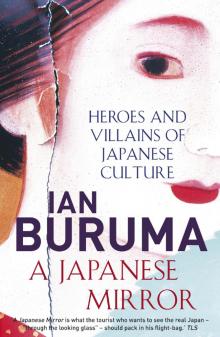 A Japanese Mirror
A Japanese Mirror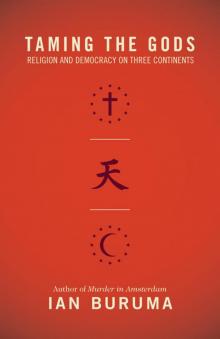 Taming the Gods
Taming the Gods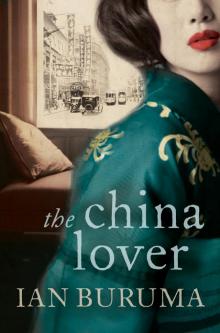 The China Lover
The China Lover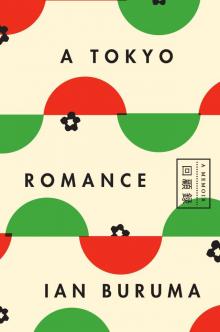 A Tokyo Romance
A Tokyo Romance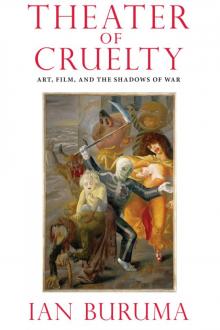 Theater of Cruelty
Theater of Cruelty Year Zero
Year Zero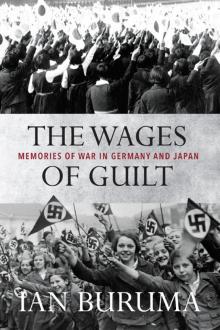 The Wages of Guilt
The Wages of Guilt Murder in Amsterdam
Murder in Amsterdam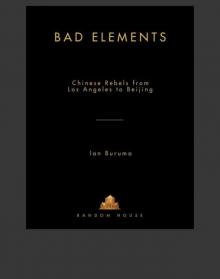 Bad Elements
Bad Elements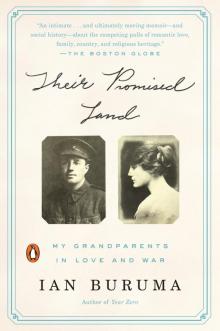 Their Promised Land
Their Promised Land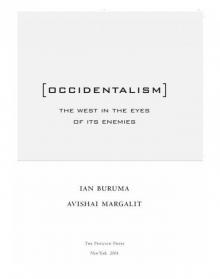 Occidentalism
Occidentalism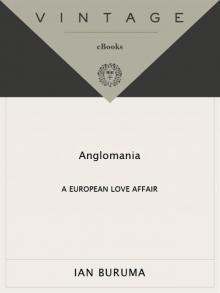 Anglomania
Anglomania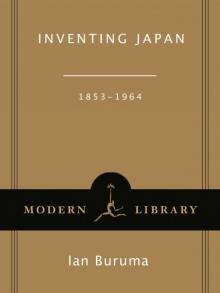 Inventing Japan: 1853-1964 (Modern Library Chronicles)
Inventing Japan: 1853-1964 (Modern Library Chronicles) The Missionary and the Libertine
The Missionary and the Libertine